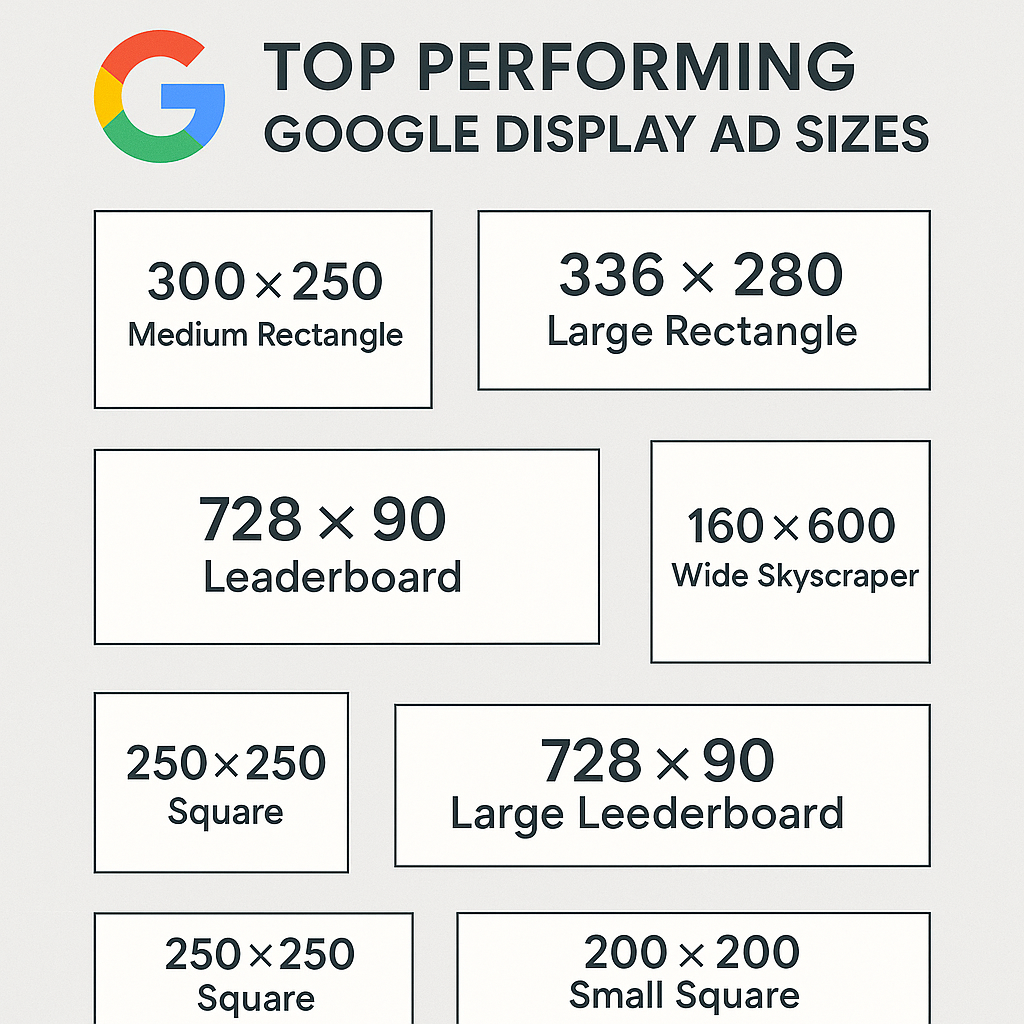The Evolving Digital Canvas
The digital landscape is in a state of perpetual transformation, with web design evolving at an unprecedented pace. This rapid evolution is driven by continuous advancements in technology and a significant shift in user expectations. Today, a website is far more than a static online brochure; it has become an interactive, AI-powered, and deeply user-centric experience that serves as a primary driver for engagement, conversions, and brand loyalty. The strategic imperative for businesses is clear: merely having an online presence is no longer sufficient; adapting to these future trends is not just an aesthetic choice but a critical strategic necessity to secure and maintain a competitive edge.
This profound shift in the role of a website means that proactive adaptation to evolving standards and user expectations is paramount. The consequences of neglecting modern web design principles are severe and directly impact a business’s viability. Data indicates that a staggering 94% of users distrust a website due to poor design, and 57% will not recommend a business if its mobile experience is subpar. Furthermore, with attention spans shorter than ever, 47% of users will abandon a site if it takes longer than 2 seconds to load. These statistics underscore that digital presence is no longer a support function but a core business driver, making design a strategic investment rather than a cost center. The rapid evolution of the web means a reactive “wait and see” approach is inherently detrimental, as businesses that fail to evolve risk being left behind in a hyper-competitive digital space. This article will delve into the pivotal trends shaping the future of website design from 2025 to 2030 and outline the essential factors businesses must proactively consider to build a truly future-proof and effective online presence.
II. The Future Landscape of Website Design (2025-2030): Key Trends
The digital horizon for website design is marked by several transformative trends, each demanding strategic attention from businesses aiming for sustained relevance and growth.
A. Hyper-Personalization and Adaptive Experiences
The era of “one-size-fits-all” websites is unequivocally over. In 2025, personalization is no longer a luxury but a fundamental expectation, as customers demand unique experiences that make them feel valued. This imperative is highlighted by the fact that 61% of customers currently feel companies treat them like numbers rather than individuals. This tailored approach directly contributes to building trust, fostering loyalty, reducing bounce rates, and significantly improving conversion rates.
Future interfaces will be hyper-personalized, dynamically integrating content, display conditions, and advanced pop-ups to deliver messages and offers precisely aligned with individual user needs. Websites will increasingly adapt dynamically based on user behavior, browsing history, declared preferences, and even contextual signals like visit time or geolocation. This level of sophistication signifies a profound shift in user expectations, where individuals seek interactions that make them feel “known” and “understood”. This fosters a deeper emotional connection that transcends mere transactional convenience, leading to increased customer lifetime value.
Artificial intelligence (AI) and machine learning (ML) are the core engines behind this transformation. These technologies enable dynamic content creation, allowing websites to morph and adapt based on user behavior and predictive analytics that anticipate user needs even before they are explicitly stated. AI analyzes user behavior, preferences, and interaction patterns to deliver tailored recommendations and content. Furthermore, AI will automate UI adjustments, tweaking layouts, color schemes, and even font choices based on real-time engagement metrics, moving beyond manual A/B testing to continuous self-optimization. AI-driven design tools like Adobe Sensei or Wix ADI are becoming standard, streamlining the design process. This sophistication, however, requires more complex backend architecture and substantial infrastructure investments to support the dynamic nature of these experiences. The implication is that web design processes will become increasingly data-driven and automated, necessitating that designers and developers upskill to become strategists who leverage AI tools effectively, rather than being replaced by them.
B. Immersive and Interactive Elements
To capture diminishing attention spans and extend user engagement, interactive and immersive elements are rapidly gaining traction. These range from subtle micro-interactions to complex 3D visuals and gamified experiences.
Micro-interactions, such as hover effects, button ripples, and loading indicators, provide crucial visual feedback, reinforce user actions, and add a polished feel to interfaces. These “tiny details with big impact” make interfaces feel responsive and human, subtly guiding users and even infusing emotional value, as seen in celebratory animations for task completion. Beyond these subtle cues, trends include custom cursor animations, scroll-triggered animations that turn browsing into a storytelling experience, and experimental navigation patterns that move beyond traditional menus.
Interactive 3D elements are transforming websites by adding depth and realism, creating immersive experiences for everything from product previews on e-commerce sites to dynamic storytelling on landing pages. Technologies like WebGL and the emerging
WebXR Device API are crucial for bringing augmented and virtual reality (AR/VR), collectively known as mixed reality (XR), directly to the web. The combined AR/VR market is projected for significant growth, expected to exceed $100 billion in 2025 and reach $200.87 billion by 2030. Mobile AR users alone are anticipated to surpass 2 billion by 2025, marking a critical inflection point for mainstream adoption.
AR is already revolutionizing sectors like retail, where AR-powered virtual try-ons and interactive 3D product displays are increasing purchase intention by 17% and reducing returns. Businesses can use WebAR for 3D product visualization in customers’ own environments, allowing them to place products virtually in their homes or offices. This directly addresses the traditional e-commerce limitation of not being able to physically interact with products before purchase, fundamentally blurring the lines between digital and physical commerce. Beyond retail, WebXR offers transformative applications in real estate (virtual property tours), education (virtual field trips, safe lab experiments), healthcare (surgical simulations), remote work (virtual collaboration spaces), and tourism (immersive destination previews). A key advantage is
WebAR, which allows users to access AR experiences directly through their web browsers via a simple QR code scan or link, eliminating the need for app downloads and lowering barriers to entry for businesses.
When designing these immersive experiences, critical considerations include creating natural interactions that mirror real-world behaviors (e.g., hand tracking, gesture recognition, voice commands), providing clear and timely feedback (visual, auditory, haptic cues), and building believable, responsive environments with physics and dynamic lighting. However, it is crucial not to overdo interactive elements, as too many can overwhelm users and detract from the overall experience. The shift towards an “experience-first” design paradigm for WebXR means that designers need to think more like game developers or architects, focusing on spatial awareness, sensory feedback, and user presence within a simulated environment, ensuring comfort and intuitive engagement. This represents a significant shift in how web experiences are conceptualized and built, moving beyond flat screens into spatial computing.
C. Voice-First and Conversational Interfaces
The increasing prevalence of voice-activated assistants is making voice search optimization and voice-first design principles increasingly integral to web development. This means prioritizing conversational interaction patterns and ensuring interfaces work seamlessly with both traditional and voice inputs.
By 2025, chatbots are projected to handle a staggering 95% of customer service interactions, potentially saving businesses over $11 billion annually. These are no longer considered mere “gadgets” but have matured into essential components of modern user experience, boasting appreciation rates as high as 90% for these interactions. AI-powered chatbots are evolving into sophisticated brand representatives with personality and custom UIs, acting more like “concierges” than basic tech support. This signifies a profound shift from a “click-to-convert” model to a “converse-to-convert” paradigm, where users engage through natural language.
Websites must adapt to cater not only to touch-based navigation but also to seamless voice interactions, as over 40% of users already rely on voice commands. Advances in natural language processing will make voice commands even more intuitive, and semantic networks will enable better machine perception and processing of spoken requests. This trend also extends to deeper integration with smart home devices like Amazon Alexa, Google Assistant, and Apple Siri, providing more cohesive user experiences across various touchpoints. The implication is that businesses need to invest not just in the underlying AI technology but also in the linguistic and emotional design of their conversational interfaces to ensure they align with the overall brand identity, as a generic, robotic chatbot risks alienating users.
D. Evolving Visual Aesthetics and User-Centric Design
In an age of ever-shortening attention spans, simplicity and minimalism have emerged as powerful tools for enhancing user experience. This translates into decluttering pages, reducing unnecessary steps in user journeys, and ensuring that Calls-to-Action (CTAs) are highly visible and intuitive, making the browsing and conversion process as seamless as possible.
Bold minimalism is a prominent aesthetic, combining clean layouts with striking typography, ample white space, and subtle color accents to emphasize content clarity and visual impact. This approach exemplifies a strategic balance between simplicity and expressiveness, where the goal is to be “impactful yet simplistic”.
Expressive typography is also gaining ground, utilizing bold, quirky, or animated fonts as central design elements rather than mere accents.
Current color trends favor bold contrasts, saturated gradients, and transparent overlays. Furthermore,
dark themes have evolved into sophisticated, customizable, and user-friendly designs that significantly reduce eye strain, particularly beneficial during the internet’s peak evening hours. Other notable visual trends include the integration of
retro styles (blending bold colors, pixel art, glitch effects, and neon accents with handcrafted elements) and scrapbooking aesthetics (asymmetrical layouts, interactive widgets) to create unique and memorable visual experiences. Full-screen headers and modular layouts like the
Bento Grid/UI are popular for their visual intensity and effective content organization. The strategic use of
negative space remains foundational for directing user attention and improving readability.
Ultimately, a content-first design approach is paramount, prioritizing the delivery of valuable information in a structured, digestible manner. This involves focusing on legible typography, clean layouts, and intuitive navigation, ensuring that the design enhances the message rather than overshadowing it. This strategic approach to visual elements ensures they contribute to the user’s understanding and engagement rather than distracting from it. The underlying principle is that by simplifying the overall structure, designers gain freedom to make specific elements truly stand out, creating memorable experiences without overwhelming users.
E. The Dawn of Web3
After years of anticipation and development, Web3 is poised to move from a niche concept to mainstream adoption, with 2025 emerging as a pivotal year for this breakthrough. The Web 3.0 market is projected for explosive growth, with a compound annual growth rate (CAGR) ranging from 35.4% to 49.3% from 2024 to 2030, potentially reaching nearly $87.09 billion by 2030.
This transformation fundamentally influences web design principles and development practices by introducing core tenets such as decentralization, where control is distributed across many nodes, eliminating single points of failure. It champions
user data ownership, empowering users with full control over their personal data through blockchain-based identity systems and decentralized storage solutions like IPFS. This represents a profound shift from a platform-centric to a user-centric digital identity and value system, directly contrasting with the centralized control prevalent in Web2.
Web3 also facilitates advanced AI and ML integrations, allowing for secure, trustless processing and analysis of data, enhancing decision-making and personalization while preserving user privacy.
Interoperability is a key goal, aiming for a seamless and interconnected ecosystem where assets and data can be transferred between different blockchain networks without centralized intermediaries. Finally,
trustless transactions, enabled by smart contracts, allow direct peer-to-peer interactions, reducing fraud and ensuring authenticity through transparency and cryptographic security. This indicates the rise of a “trust economy” where trust is inherent in the protocol, rather than relying on third-party verification.
Web3 development directly addresses several drawbacks of Web2, including its centralized nature, lack of anonymity, and vulnerability to censorship and single points of control. It also aims for broader compatibility with various gadgets beyond traditional internet-enabled devices, such as smart home appliances like fridges and TVs. Despite its promise, Web3’s mainstream adoption journey still faces challenges, including persistent security concerns due to an expanded attack surface, scalability limitations when confronted with massive user influxes, and the potential for a digital divide if equitable access isn’t ensured. Businesses should approach Web3 integration with a realistic understanding of its current limitations, ensuring that the user experience remains performant and accessible even as the underlying infrastructure matures.
F. Sustainable and Purpose-Driven Design
In an increasingly environmentally and socially conscious world, websites that clearly reflect a commitment to sustainability and social responsibility resonate deeply with consumers. This alignment of values translates directly into stronger customer loyalty and brand affinity. A purpose-driven website effectively communicates a brand’s core values, mission, and ethical stance, differentiating it in a crowded digital space. This approach aligns with a growing consumer demand for eco-conscious brands and ethical best practices.
Sustainable web design is an approach focused on minimizing environmental impact throughout a website’s lifecycle. This includes practices such as writing leaner code, optimizing images for smaller file sizes, and utilizing energy-efficient hosting solutions. The urgency for this approach is highlighted by the fact that the internet currently produces approximately 3.7% of global carbon emissions, a figure that is rising with increased data consumption. A typical data center, for instance, can use between 11 and 19 million liters of water per day.
This design philosophy adheres to the principles of the Sustainable Web Manifesto: clean (powered by renewable energy), efficient (optimized resource management), open (transparent), honest (avoiding deceptive practices), regenerative (positive impact), and resilient (long-term viability). Ethical design explicitly includes sustainability as a core principle, reinforcing its importance. The emphasis on leaner code and optimized images also directly contributes to faster load times, which in turn improves user experience and SEO rankings. This demonstrates a powerful convergence where ethical practices enhance brand reputation, attract eco-conscious consumers, and simultaneously boost technical performance metrics. While some sustainable design aspects might be visible, many critical practices are inherently “invisible” to the end-user, implying that future web design will increasingly embed sustainability into its core technical architecture.
III. Leading Factors Businesses Must Consider When Building a Website
Building a successful website in the coming years requires a holistic strategy that extends beyond mere aesthetics to encompass user experience, technological integration, performance, security, ethics, content, and the underlying development approach.
A. Prioritizing User Experience (UX) and User Interface (UI)
User experience (UX) design has transcended its traditional role as a creative endeavor to become a strategic force directly driving business growth and customer loyalty. Businesses that prioritize UX as a core pillar of their strategy are poised to lead the market, while those that overlook it risk significant setbacks. The global UX services market is projected to reach an astonishing $32.95 billion by 2030, highlighting its growing importance and the clear return on investment (ROI) it offers.
The tangible benefits of strong UX/UI are compelling: a well-designed User Interface (UI) can increase website conversion rates by up to 200%, and companies that allocate just 10% of their development budget to UX report an 83% increase in conversions. These statistics transform UX from a “nice-to-have” into a clear, measurable investment that directly drives revenue and customer lifetime value. Conversely, the costs of poor design are severe: 94% of users distrust a website due to poor design, 57% won’t recommend a business if its mobile experience is poor, and 47% will leave a site if it doesn’t load in under 2 seconds. The financial penalties of neglecting UX are demonstrably higher than the investment required to implement it effectively.
Customer Journey Mapping (CJM) is an indispensable tool for understanding and optimizing user paths, encapsulating the customer’s experience and how they progress through various stages of using a product or service. It helps UX/UI teams identify pain points, overlooked details, and opportunities for improvement, ensuring a smooth and satisfying experience. CJM serves as a “single source of truth” for all internal teams—development, sales, marketing, and customer service—aligning their efforts towards a cohesive and user-centric approach. The process involves defining clear objectives, identifying target user personas, conducting thorough research with real customers (e.g., user testing, surveys), and organizing data to create the map. Crucially, CJMs are not static deliverables but require continuous adaptation based on user feedback and emerging technologies, serving as a continuous feedback loop that enables agile responses to changing user behaviors and technological advancements. This makes CJM a critical tool for maintaining long-term user satisfaction and ensuring ongoing relevance.
Mobile-First and Responsive Design is no longer an option but a critical necessity, given that an estimated 95% of web traffic will originate from mobile devices by 2025. Businesses must prioritize seamless mobile experiences, ensuring everything from navigation to content presentation is optimized for smaller screens. Google’s mobile-first indexing strategy means that search engine rankings are primarily based on a website’s mobile experience, making responsiveness crucial for SEO. Beyond basic responsive techniques that simply resize elements, adaptive design approaches deliver different experiences optimized for specific device capabilities. The core benefits include improved SEO, enhanced user engagement, significant cost efficiencies (maintaining one site across all devices), and faster page loads. Websites must be device-agnostic, catering to seamless experiences across all platforms.
| Trend | Description | Key Business Benefits | Supporting Snippet IDs |
| Hyper-Personalization | Tailoring content, layout, and functionality based on individual user behavior, preferences, and context, often driven by AI. | Increased engagement, higher conversion rates, improved customer loyalty, reduced bounce rates, enhanced brand trust. | |
| Immersive & Interactive Elements | Incorporating 3D visuals, interactive demos, gamified experiences, and micro-interactions, often via WebXR for browser-based AR/VR. | Higher user engagement, increased time on site, boosted conversions (e.g., 17% increase in purchase intention with AR), competitive differentiation, enhanced brand recall. | |
| Voice-First Interfaces | Designing for conversational interaction patterns and voice commands, leveraging AI-powered chatbots and voice search optimization. | Improved customer service efficiency (95% handled by chatbots), enhanced user experience, accessibility benefits, broader audience reach, hands-free navigation. | |
| Sustainable Design | Reducing environmental impact through leaner code, optimized images, and energy-efficient hosting, reflecting a commitment to social responsibility. | Stronger brand loyalty, enhanced brand image, increased consumer trust, competitive differentiation, improved website performance (faster load times). | |
| Mobile-First Design | Prioritizing design and development for mobile devices first, then scaling up for larger screens. | Improved SEO rankings (mobile-first indexing), enhanced user engagement, cost efficiency in maintenance, faster page loads, meeting customer expectations (95% mobile traffic). |
B. Leveraging Artificial Intelligence (AI) Strategically
Artificial intelligence is fundamentally revolutionizing web development, automating complex tasks, and enabling the creation of smarter, more responsive, and intelligent user experiences. AI is transitioning from an auxiliary tool to an active participant in the development process, rapidly becoming essential rather than optional for competitive web applications.
AI’s impact spans multiple critical areas across the web development lifecycle:
- Design Automation and Content Creation: AI-powered design tools, such as Adobe Sensei or Wix ADI, can dynamically generate content and automate UI adjustments, significantly improving designers’ workflow and creating tailored, unique visuals in seconds. AI can also generate and edit videos and animations rapidly, enabling fast, personalized, and engaging content delivery. This empowers designers by handling repetitive tasks, freeing them for innovation and creative excellence.
- Development Efficiency: AI assists developers with code generation and optimization, with tools like GitHub Copilot and TabNine suggesting code completions and entire functions, thereby reducing development time for common programming tasks. It also powers automated testing and debugging tools, identifying potential bugs before they reach production and learning from historical issues to prevent future problems. AI algorithms automate data processing, ensuring efficient storage, retrieval, and organization, while predictive maintenance for servers helps prevent crashes. Developer roles will shift towards strategic direction and creative problem-solving rather than implementation details.
- User Interaction and Insights: AI enables personalized user experiences with machine learning, analyzing user behavior, preferences, and interaction patterns to deliver tailored recommendations and content. AI-driven analytics provide actionable data and predictive insights, helping businesses anticipate customer needs and make informed decisions. Chatbots and conversational interfaces, powered by AI, are becoming standard for customer service, handling a vast majority of first-level inquiries.
- Security and Performance: AI-driven threat detection and security monitoring identify anomalous patterns that might indicate breaches, continuously learning from new attack vectors. Organizations using AI in security tools have reported significant reductions in breach costs, averaging $3.81 million. AI also contributes to improved website performance through predictive analysis for server load management and AI-driven optimization tools.
The pervasive integration of AI transforms the very nature of web development. It is not merely a feature but a pervasive intelligence layer that fundamentally changes human roles from execution to strategic oversight and creative innovation. The competitive edge will go to those who effectively leverage AI to create smarter, more adaptive, and more secure digital experiences. Businesses must adopt an “AI-first” mindset, integrating AI strategically across their entire web presence. This requires investing not just in AI tools but also in training their teams to collaborate effectively with AI, focusing on higher-value tasks that leverage human intuition and strategic thinking.
C. Optimizing for Performance and Search Engine Visibility
Website performance and search engine visibility are inextricably linked, forming a critical foundation for online success. Users expect websites to load in under 2 seconds, and a failure to meet this expectation can lead to significant bounce rates.
Core Web Vitals (CWV) are Google’s key performance metrics used to measure a website’s user experience, directly impacting search engine rankings. Websites that fail to optimize CWV will experience significant drops in rankings, traffic, and revenue. Google’s algorithm places even greater emphasis on these metrics in 2025. The key CWV metrics include:
| Metric | Description | Good Score | Needs Improvement Score | Poor Score |
| Largest Contentful Paint (LCP) | Measures how long it takes for the largest content element (image, text block) on a page to become visible. | Under 2.5 seconds | 2.5 to 4.0 seconds | Over 4.0 seconds |
| Interaction to Next Paint (INP) | Measures the overall responsiveness of a web page to user interactions (clicks, taps, keyboard). Replaced First Input Delay (FID) in 2025. | 200 milliseconds or less | 200 to 500 milliseconds | Over 500 milliseconds |
| Cumulative Layout Shift (CLS) | Measures visual stability, ensuring that the layout does not shift unexpectedly as the page loads. | Less than 0.1 | 0.1 to 0.25 | Over 0.25 |
Export to Sheets
These metrics confirm that user experience is no longer just a conversion factor but a direct, measurable ranking signal. A visually appealing and relevant website that performs poorly will be penalized, making performance optimization a non-negotiable aspect of digital visibility.
Speed Optimization Techniques: Achieving blazing-fast website speed requires a methodical approach to both infrastructure and front-end efficiency:
- Modern Hosting & CDN: Top-performing websites are increasingly hosted on modern infrastructure like containerized environments or cloud-native platforms (AWS, Google Cloud, Azure) for auto-scaling and geographically distributed servers. Utilizing a Global Content Delivery Network (CDN) is essential to reduce latency for global users, speed up page loads during traffic surges, and decrease the load on origin servers by offloading static content delivery.
- Asset Optimization: Employ next-gen image formats like WebP and AVIF, which can reduce file size by more than 30% compared to JPEG or PNG without noticeable quality loss. Implement responsive images using the
srcsetattribute and compress images before uploading. Prioritize lazy loading for images, iframes, and content below the fold. Host fonts locally to avoid unnecessary DNS lookups and subset fonts to include only used characters. Videos should avoid auto-play in HD, especially above the fold, and use lightweight embed techniques. - Code Streamlining & Compression: Minify CSS and JavaScript to remove unnecessary characters and defer or async non-critical scripts to prevent render-blocking. Remove unused styles and code, and bundle files strategically. Enable GZIP or Brotli compression for text-based assets, which can significantly reduce file size.
- Ongoing Monitoring: Regularly use tools like Google Lighthouse, GTmetrix, and WebPageTest to track performance and identify issues.
Evolving SEO in the AI Era: Search engine optimization is undergoing a fundamental shift, moving beyond traditional keyword-centric approaches to adapt to AI-driven search. Search isn’t just Google anymore; it’s everywhere: AI chatbots, voice assistants, and social platforms.
- New SEO Paradigms: This includes GEO (Generative Engine Optimization), focusing on creating content that generative AI tools (like ChatGPT) will select as sources for answers; AEO (Answer Engine Optimization), structuring content for direct, clear answers to appear in featured snippets or voice assistant responses; and AIO (AI Optimization), making content easily readable and learnable for machines to be included in AI training data.
- Search Experience Optimization (SXO): This is highlighted as a crucial element that helps ranking by improving the entire search experience, not just a post-ranking activity. The emphasis is on improving the entire search experience, not just optimizing for keywords.
- Semantic SEO: This approach focuses on optimizing content around meaning and user intent, rather than just exact-match keywords, significantly improving relevance and visibility. Semantic SEO helps search engines understand context, relationships between topics, and what the user is looking for. Strategies include optimizing for keyword clusters, incorporating synonyms and related terms, enhancing content length and topical depth, utilizing structured data (Schema), addressing “People Also Ask” questions, and leveraging tools for N-Gram analysis and TF-IDF measurement. Technical SEO aspects like crawl depth optimization (e.g., using HTML sitemaps) and optimizing for voice search using Machine Readable Entity IDs (MREID) and Passage Indexing are increasingly important.
The convergence of performance and SEO means that technical optimization for speed and stability is as fundamentally critical as content quality. A visually appealing and relevant website that performs poorly will be penalized, making performance optimization a non-negotiable aspect of digital visibility. This mandates unprecedented collaboration between designers, developers, and SEO specialists to create content that is optimized for both machine consumption and human experience.
D. Ensuring Robust Security and Data Privacy
Security must be prioritized at every development stage, adhering to “Secure-by-Design principles,” rather than being treated as an afterthought. This involves integrating threat modeling, secure coding practices, and automated vulnerability scanning into standard development workflows.
AI-driven threat detection and security monitoring are transforming web security by identifying anomalous patterns that might indicate breaches, and continuously learning from new attack vectors. Organizations using AI in security tools have reported significant reductions in breach costs, averaging $3.81 million. However, security concerns persist, especially with the expanded attack surface created by increased adoption of new technologies like Web3.
Data privacy regulations like the General Data Protection Regulation (GDPR) in Europe and the California Consumer Privacy Act (CCPA) have significantly reshaped how businesses handle web security. These regulations aim to protect personal data and ensure organizations use it responsibly, granting consumers the right to know, access, delete, and opt out of the sale of their data. Compliance with these regulations is becoming “table stakes” for businesses, but it is also a strategic necessity to drive customer trust and business growth. Regulations are expanding globally, with new laws in Brazil (LGPD) and India (Personal Data Protection Bill), and new AI-specific regulations are being considered worldwide.
The impact of these regulations means businesses must implement robust data protection measures, including using encryption to protect data both at rest and in transit, and strong access controls like multi-factor authentication (MFA). Regular security audits are mandated to assess the effectiveness of data protection measures, and clear data breach notification procedures (within 72 hours) must be in place.
Essential Cybersecurity Practices for 2025:
- Multi-Factor Authentication (MFA): A crucial security measure that adds an extra layer of protection to accounts and systems.
- Regular Software Updates: Keeping all software (operating systems, applications, security software) up-to-date is vital, as updates often include security patches for vulnerabilities.
- Employee Training: Regular cybersecurity training is essential to educate staff on recognizing phishing attempts, strong password practices, and safe internet use.
- Firewalls & Secure Networks: Implementing and regularly testing firewalls is key. Wi-Fi networks must be secured with strong encryption protocols like WPA3, and separate guest networks should be set up for visitors.
- Regular Backups: Automated, encrypted backups stored both on-site and in the cloud are critical for protecting against data loss due to cyberattacks or hardware failures.
- Password Managers: These tools help create and store strong, unique passwords for all accounts, reducing common password mistakes.
- Network Monitoring & Limited Privileges: Closely monitoring network traffic for anomalous patterns is key to early threat detection. Restricting administrative rights to only essential personnel reduces risk.
- Data Encryption: Using AES-256 encryption for data at rest and TLS 1.3 for data in transit ensures data remains secure, whether stored or moving across networks, including email encryption.
Cybersecurity is not a one-time project but an ongoing process, requiring regular updates, periodic risk assessments, and continuous learning from incidents. Businesses that proactively embed security and privacy into their web design and development processes will build stronger customer loyalty and avoid significant legal and reputational risks. Trust becomes a premium in an increasingly data-sensitive environment.
E. Embracing Inclusive and Ethical Design
The perfect website doesn’t just look good or load quickly; it makes everyone, regardless of ability, feel like they belong there.
Accessibility as a Necessity: Accessibility is no longer optional but a critical part of what makes a website functional and future-proof. With over a billion people worldwide living with some form of disability, ensuring a website works for everyone is crucial. Legal requirements are tightening, with laws like the EU Directive 2019/882 (European Accessibility Act) and Germany’s BFSG making accessible digital products and services mandatory for many companies by June 28, 2025. Updated WCAG 2.2 guidelines emphasize mobile accessibility and inclusive multimedia. AI tools are now leading accessibility efforts, analyzing contrasts, automatically generating alternative text for images, and optimizing keyboard navigation.
Beyond Compliance – Inclusive Design: Inclusive design goes beyond meeting accessibility standards; it’s about creating products and experiences that cater to diverse needs and preferences, regardless of abilities, age, or background. This approach expands audience reach, improves UX for all users, ensures legal compliance, prevents legal risks, elevates brand reputation, and fosters innovation. Key aspects include:
- Neurodivergent-Centric Design: Prioritizing simplified interfaces, distraction-free modes, and customizable text sizes to support users with ADHD, dyslexia, and autism.
- Voice Navigation: Becoming essential, benefiting those with mobility challenges and improving UX for multitasking users, with over 40% of users relying on voice commands in 2025.
- Immersive Accessibility: Augmented Reality (AR) and Virtual Reality (VR) technologies are being optimized to create richer, more inclusive digital experiences.
- Focus on Aging Populations: As global populations age (1 in 6 people over 60 by 2030), accessibility efforts increasingly prioritize older users, including larger fonts, simplified navigation, and intuitive error recovery.
- Universal Design Principles: Emphasizing flexibility and customization (e.g., adjustable text size, color contrast), clear and consistent navigation, and multimodal interaction.
- Core Principles: Recognizing exclusion, solving for one (extending to many), learning from diversity, providing equivalent experiences, offering choice and control, and prioritizing clarity.
Ethical Design Principles: This involves prioritizing fairness, transparency, inclusivity, privacy, and sustainability throughout the design process. Key aspects include:
- User-Centered Design: Prioritizing understanding users’ needs, preferences, and values throughout the design process through research and usability testing.
- Transparency: Being transparent about design decisions, including how user data is collected and used, clearly communicating privacy policies, and avoiding “dark patterns” (misleading user interfaces or trick questions designed to confuse users into unintended actions).
- Ethical AI: Ensuring fairness, accountability, and transparency in AI-driven systems by addressing biases, providing explanations for automated decisions, and regularly auditing algorithms for unintended consequences.
The move towards inclusive and ethical design represents a profound shift towards deep empathy and ethical responsibility in web development. It ensures digital experiences are universally usable and trustworthy, building brand integrity in an increasingly values-driven market. Businesses must integrate empathy into their design process, actively seeking diverse user feedback and avoiding manipulative practices.
F. Strategic Content and Brand Identity Integration
A website serves as the primary digital embodiment of a brand. Its content and design must not only inform but also convey the brand’s values, personality, and offerings in a consistent, compelling way.
Content-First Approach: Users visit websites for information, making content king. Design should enhance the message, not overshadow it, prioritizing legible typography, clean layouts, and easy-to-navigate structures.
Interactive and AI-Driven Content Strategy: Content strategy is evolving, with content teams transitioning from storytellers to “orchestrators,” producing the right content, in the right format, with the right context, at the right moment, for the right audience. This includes:
- Hyper-Personalized Content: Leveraging AI tools to craft hyper-specific content that resonates with the audience at scale, paired with behavioral data for tailored messaging.
- Interactive Storytelling: Engaging content like quizzes, ROI calculators, polls, and AR/VR experiences will dominate to boost engagement.
- Short-Form Video: Crucial for platforms like TikTok, YouTube Shorts, and LinkedIn, with AI assisting in generating and repurposing content across channels.
- Voice of Customer (VoC) Content: Using customer insights to create relevant topics that align with pain points, FAQs, and industry trends.
- Semantic SEO: Optimizing content around meaning and user intent, rather than just exact-match keywords, significantly improving relevance and visibility in AI-driven search. Strategies include optimizing for keyword clusters, incorporating synonyms, enhancing topical depth, utilizing structured data, and addressing “People Also Ask” questions.
Brand Identity Integration: Brand strategy is a critical element of website design, laying the foundation for a cohesive, effective, and engaging online service that supports business objectives and strengthens the brand. Without a clear brand strategy, a website can become confusing and inconsistent, potentially harming the brand image.
- Visual Elements: Logos, colors, typography, images, illustrations, and icons must be audience-appropriate, distinctive, simple, timeless, and scalable across different channels. Colors evoke emotions and guide user decisions, while typography sets mood and increases brand recognition.
- Tone of Voice: This refers to how a brand communicates, differentiating it from competitors, delivering relevant content, and conveying brand values. All content, from UI text to articles, should align with brand identity for a cohesive user experience.
- Design Systems: These frameworks, comprising reusable components, guidelines, and documentation, ensure a consistent user experience across all channels and devices, making ongoing service design and development more cost-efficient.
The symbiosis of content, AI, and brand authenticity is paramount. While AI can handle volume and personalization, human creativity and brand authenticity are crucial to avoid generic, untrustworthy content. Businesses must leverage AI for efficiency (ideation, repurposing, personalization) but retain human control over core messaging, brand narrative, and quality to build genuine connections.
G. Choosing the Right Development Approach
The proliferation of development approaches offers businesses more flexibility but also demands a strategic decision based on specific needs, as each comes with distinct advantages and disadvantages.
- No-code Platforms:
- Advantages: Offer very fast deployment and significantly reduced development costs, enabling non-technical users to create functional applications independently. Ideal for rapid prototyping, automating internal workflows, and building simple applications like workflow management or progress reporting tools. They provide a safe environment for employees to solve unique problems without extensive IT involvement.
- Disadvantages: Highly limited in customization and scalability, making them unsuitable for complex, enterprise-grade solutions. Businesses face vendor lock-in risks and dependency on third-party platforms. While generally more secure due to no custom code, they lack the flexibility for deep integrations or specialized features required by highly regulated industries.
- Low-code Platforms:
- Advantages: Require minimal coding experience, allowing developers to increase productivity and churn out more applications faster than traditional custom development. They offer more control over customization than no-code platforms, as developers can code in specific features. Low-code is well-suited for applications with many complex functions or for building foundational business processes.
- Disadvantages: Still have constraints compared to custom development and require users to have a basic understanding of coding languages, which can be a hurdle for non-technical employees. They can also lead to vendor lock-in and may introduce security challenges if custom code is poorly written.
- Custom Development:
- Advantages: This approach involves building applications from scratch, providing full control over design, functionality, and integrations to meet specific business needs. It offers greater flexibility, scalability for long-term business growth, and stronger security and compliance, making it ideal for advanced automation, high-security standards, and deep system integrations. Custom features also provide better brand differentiation.
- Disadvantages: Requires a higher upfront investment and longer development timelines compared to no-code/low-code solutions. It also necessitates ongoing maintenance and dedicated resources.
| Feature/Factor | No-code | Low-code | Custom Development |
| Coding Skills Required | None | Basic to Advanced | High |
| Development Speed | Very Fast (pre-built components) | Fast (slower than no-code due to customization) | Longer (built from scratch) |
| Customization | Highly Limited | More Control (can code in features) | Full Control |
| Scalability | Small-to-medium apps | Enterprise-grade, scalable solutions | High (for long-term growth) |
| Cost (Upfront) | Lower | Moderate | Higher |
| Best For | Simple workflows, rapid prototyping, internal tools, flexible apps | Complex functions, foundational apps, increased developer productivity | Advanced automation, deep integrations, unique features, high security |
| Security Considerations | Generally secure (no custom code opportunity) | May introduce vulnerabilities (custom code) | Stronger (built with security in mind) |
Export to Sheets
The choice of development approach is a strategic business decision, not just a technical one. It dictates how quickly a business can launch, iterate, scale, and differentiate itself. Businesses must conduct a thorough needs assessment, evaluating their project’s complexity, budget, timeline, desired level of customization, security requirements, and long-term scalability goals to select the most appropriate path. This ensures the chosen approach aligns with their overall digital strategy and future growth ambitions.
IV. Conclusion: Future-Proofing Your Digital Presence
The digital landscape is undergoing a profound transformation, moving towards more intelligent, personalized, and immersive web experiences. For businesses, proactive adaptation to these evolving trends is not merely about aesthetics; it is a strategic imperative to secure a competitive edge, drive business growth, and build lasting customer loyalty.
The analysis indicates that the future of website design is characterized by a complex, interconnected ecosystem where success hinges on a holistic, integrated strategy rather than siloed efforts. The strategic imperative of proactive adaptation means that digital presence is no longer a support function but a core business driver, making design a strategic investment. This requires businesses to fundamentally shift their mindset from reactive website overhauls to continuous digital evolution, integrating design and technology strategy into their core business planning.
The shift towards AI-driven hyper-personalization transforms websites into living, intelligent entities that learn and adapt, making data analytics and AI integration central to the design process. The rise of immersive and interactive elements means websites are becoming “experiences” rather than just “pages,” demanding new design thinking that embraces spatial and multi-sensory interactions. Voice-first and conversational interfaces extend the website’s reach beyond visual screens, requiring content and design to be optimized for natural language interactions. Meanwhile, evolving visual aesthetics balance minimalist clarity with expressive elements to enhance usability and brand differentiation.
Underpinning these trends are foundational shifts: Web3 represents a re-architecture of the internet towards user empowerment and transparency, while sustainable and ethical design practices are becoming core components of brand integrity. Performance and SEO are converging into a holistic “Search Experience Optimization” (SXO) strategy, where technical excellence is a prerequisite for visibility, and content must be designed for both human users and AI algorithms. Finally, the choice of development approach is a strategic decision that dictates a business’s agility, competitive differentiation, and ability to adapt to future trends.
Businesses that embrace these future-forward strategies will not just keep pace but lead the charge in the evolving digital landscape, turning their websites into powerful engines for success. This necessitates continuous investment in understanding and implementing emerging trends, fostering cross-functional collaboration, and adopting a user-centric, data-driven, and ethically conscious approach to their digital presence.











Leave a Reply